calsfoundation@cals.org
USS Arkansas (M-7)
aka: USS Ozark (BM-7)
The USS Arkansas (M-7), also known as the USS Ozark (BM-7), was one of four monitor-class naval vessels built for the U.S. Navy in the late 1800s. Although designed as surface warships, these vessels were primarily relegated to support operations because they were obsolete by the time they were finished.
In 1898, the navy approved designs to introduce four new monitor vessels. These vessels were known as the USS Arkansas (M-7), USS Connecticut (M-8), USS Florida (M-9), and USS Wyoming (M-10). Because the navy designates the first ship of a class series the class name of the ship, M-7 through M-10 were known as Arkansas-class monitors. The USS Arkansas was built by the Newport News Shipbuilding and Dry Dock Company in Virginia. The vessel was launched on November 10, 1900, and was first commanded by Commodore Charles E. Vreeland. Although original plans for the Arkansas-class monitors suggested a crew of 130 sailors, the Arkansas maintained a crew of 220 sailors upon commissioning and launch.
In the late 1800s, the navy included a one-letter abbreviation to denote the class of the warship, thus the “M” for the monitor class. The vessel was the seventh monitor built, but it was the first of its series. In the early 1900s, the navy elected to rename all battleship-class vessels after states of the Union. In 1909, when the thirty-third battleship-class vessel was designated as the USS Arkansas (B-33), M-7 was renamed the USS Ozark. In 1920, the navy altered all ships’ names to include a two-letter abbreviation, resulting in the reclassification of Ozark as BM-7.
Specifications
The Arkansas-class monitors were designed as low-profile vessels providing little surface signature for identification and engagement by enemy vessels. With a length of 255’1″ and displacement weight of 3,225 tons, the Arkansas maintained a draft of 12’6″. In addition to a low signature for protection, it was built with 11″ armor along its belt, 10″ armor reinforcing its turrets, 8″ armor protecting its conning tower, and a deck composed of 1.5″ of armor.
Arkansas-class monitors were designed as coal/steamer vessels. The propulsion system of the Arkansas consisted of two vertical triple expansion engines connecting to four boilers. These provided 2,400 horsepower, which allowed the vessel to reach speeds up to twelve knots per hour. In order to feed this propulsion system, the Arkansas maintained a bunker of 350 tons of coal.
Armament
As a surface warship, the Arkansas was equipped with weapons of various calibers. The largest of these was a 12″/40 (30.5 cm) Mark 4 twin barrel turret mounted near the bow. It was one of the first U.S. naval vessels to use a barbette turret. This type of turret placed the gun housing on a cylinder that continued into the hull of the vessel, where ammunition was stored for protection and moved upward for loading and firing. The second weapon system on the Arkansas consisted of four 4″/50 (10.2 cm) Mark 7 guns positioned on the upper deck. In 1918, the Arkansas-class monitors were additionally equipped with one 3″/50 (7.62 cm) weapon system to engage aircraft and torpedo boats.
Assignments
The Arkansas’s first assignment was in 1902 with the U.S. Naval Academy in Annapolis, Maryland. Between 1903 and 1905, the Arkansas served with the Coast Squadron of the North Atlantic Fleet. In 1906, after several years of patrolling the East Coast, Gulf of Mexico, and West Indies, the Arkansas returned to the U.S. Naval Academy, where it remained until 1909. At the end of its second tour at the academy, the Arkansas, now re-flagged as the USS Ozark, was assigned to the District of Columbia Naval Militia. In 1913, the Ozark was recalled to the Norfolk Naval Shipyard for refitting as a submarine tender and then returned to duty with the North Atlantic Fleet. During the American occupation of Mexico, the Ozark participated in naval operations between May 15, 1914, and May 25, 1914, to blockade and seize the Port of Veracruz, a campaign that made its sailors eligible for the Mexican Service Medal. After this combat operation, the Ozark moved to New London, Connecticut, where the first U.S. Navy submarine base was established in 1915. By 1917, the Ozark returned to Tampico, Mexico, to conduct escort protection for American and Allied shipping. The Ozark completed its last major assignment between 1918 and 1919 by patrolling coastal waters near Key West, Central America, and the Panama Canal. It returned to Hampton Roads Harbor in the Chesapeake Bay on June 23, 1919. On August 20, 1919, it sailed to Philadelphia, Pennsylvania, where it was decommissioned, re-designated as BM-7, and eventually sold for scrap metal on January 26, 1922.
For additional information:
Department of the Navy Naval Historical Center. Dictionary of American Naval Fighting Ships III: New Navy Monitors. Washington DC: Department of the Navy, Office of the Chief of Naval Operations, Naval History Division, 1968.
“M-7 USS Arkansas.” Navsource Naval History. http://www.navsource.org/archives/01/arkansas.htm (accessed August 24, 2007). (accessed February 7, 2023).
Jonathan Ford
Arkansas Army National Guard
 Early Twentieth Century, 1901 through 1940
Early Twentieth Century, 1901 through 1940 Military
Military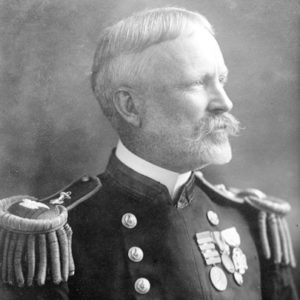 Roy Smith
Roy Smith 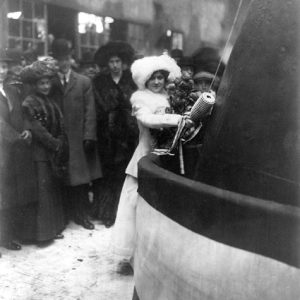 USS Arkansas
USS Arkansas 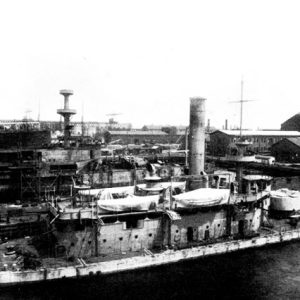 USS Arkansas (M-7)
USS Arkansas (M-7) 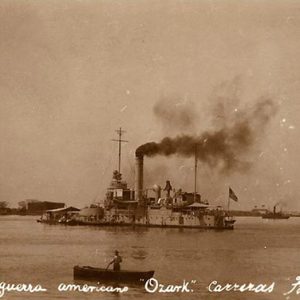 USS Ozark
USS Ozark 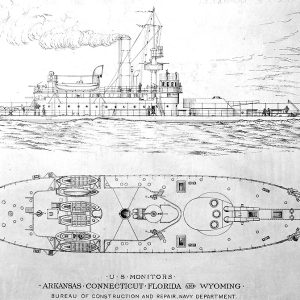 USS Arkansas (M-7) Drawing
USS Arkansas (M-7) Drawing  USS Ozark (M-7)
USS Ozark (M-7) 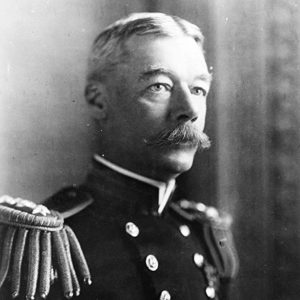 Charles E. Vreeland
Charles E. Vreeland 




Comments
No comments on this entry yet.